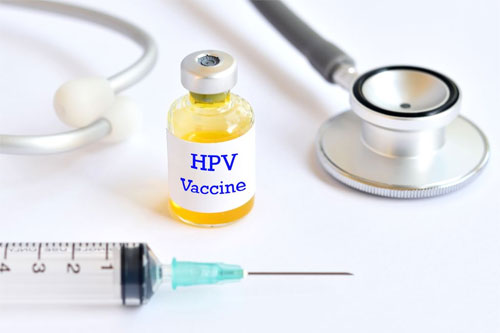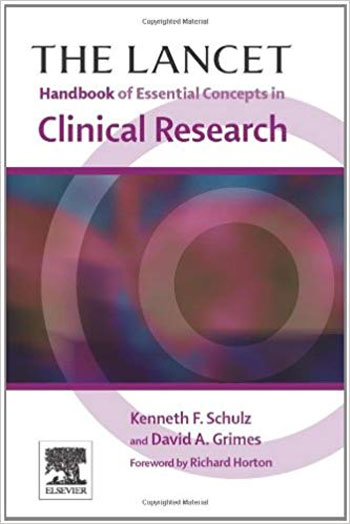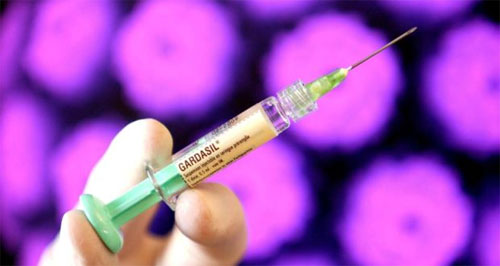Vitamins Against Viruses (3)
By Alex Vasquez
Read the second part of the article
My reply made quite obvious the shortcomings of BMJ biased research publication. One should reasonably wonder why the BMJ would publish such a flawed report, and then pay for a ‘commissioned editorial which was not peer-reviewed.’ Then, the editors collectively stifled any further conversation regarding the antiviral action of vitamin D delivered to the same population in the same time-frame, despite its proof of clinical effectiveness. Such a compilation of errors could hardly seem accidental, although they would synergize fantastically for promoting sales and government mandates of the HPV vaccine.

And now for the silent treatment from BMJ editors:
Reasonably anticipating that the BMJ would share my well-cited concerns with their readership via publication in a Letter to the Editor or Reply, I waited to hear from the Editors. When no response arrived by several weeks later, I emailed the Letters Editor and the Editor in Chief along with two other associate editors. The probability of none of them receiving my email nor nothing of my two posted rapid replies is essentially zero, and they have offered no response nor explanation for why their publications omitted this key data.
“From: Dr Alex Vasquez Date: Thu, May 9, 2019, Subject: Re: Letters timeframe To: Davies Cc: Doshi, Godlee, Ludwig
Thank you for your earlier replies. I am following-up with interest in publishing the concerns raised in my rapid responses, because the original research appears to have looked at a chronological correlation without looking at the national health campaigns that started in the same time-frame. In particular, the public health campaign that I detailed has double-blind placebo-controlled evidence of clinical effectiveness, so it is worthy of consideration.
Of the two rapid responses posted (thank you), the second is a bit more refined and has (a few) better citations (I think I changed 2 of them).
1. Scotland’s public health programs and trends improving nutritional status should be considered when discussing HPV trends
https://www.bmj.com/content/365/bmj. l1375/rr-4
2. Scotland’s public health campaigns to improve vitamin D nutriture occurred within the same timeframe as HPV vaccination
https://www.bmj.com/content/365/ bmj.l1161/rr-8
As noted in my responses, vitamin D demonstrates antiinflammatory, microbiome-modifying, immune-supporting (eg, antimicrobial peptides, sIgA) and it specifically demonstrates effectiveness against HPV. I trust that we share the same goal of helping patients avoid HPV-related disorders, and cholecalciferol clearly shows benefit, safety, wide availability, and low cost.
Thank you,
Dr Alex Vasquez”
Again expecting the journal’s editors might value research accuracy, journalistic integrity, and the importance of ethical standards in clinical care and research, I was a bit surprised that these five BMJ Editors would collectively fail to reply to cited concerns about the quality of their publication. BMJ claims on its website that it hosts and/or represents an ‘international community of readers, authors, and editors’ but apparently this sense of ‘community’ does not apply to the questioning of publications that show obvious bias by ignoring other influences and funneling the results toward vaccine endorsement.
Basic components of research integrity: Tutorial articles published in journals as well as textbooks such as The Lancet Handbook of Essential Concepts in Clinical Research can inform the implementation and evaluation of research. Ideally (but largely theoretically), research is performed honestly and competently, critically reviewed postproduction and prepublication by independent scientists/scholars, and then refereed by at least one expert-level Editor prior to publication and dissemination; the fourth component of research integrity is post-publication critique by readers and correspondence between such readers and the original authors.

A fifth component of research integrity is the publication of article-specific editorials/commentaries that provide context and perspective for the new information presented; as with the original research, such Editorials should be independently peer-reviewed in a blinded manner by internal or external reviewers prior to publication.
Authorial and editorial bypassing of research integrity: A notorious pitfall in the publication of descriptive and retrospective studies such as the one by Palmer et al being discussed here is that of false attribution; that is, the erroneous assumption that because an intervention was followed by an observation that the former caused the latter. This error is intellectually grave as it can lead to erroneous conclusions about cause-and-effect relationships, thereby misleading government policy and clinical care.
This error is also described as overstepping the data, erroneous inference, and – in Latin – post hoc ergo propter hoc which translates to ‘after this, therefore because of this’, also known as the post hoc fallacy. In truth, causal relationships can only be established in appropriately conducted clinical trials; non-interventional retrospective population studies such as this one lead by Palmer can add only accessory information but are incapable of establishing or refuting causality, especially when the study itself fails to control for other variables and considerations.
‘Errors’ in study design may be accidental or intentional. In addition to the failure to consider other causes for an observed outcome, investigators can also accidentally or intentionally ‘stack the deck’ in order to make a certain conclusion more or less likely.
Strategically or innocently, researchers can select patients that may have covariables that are of major importance to the outcome being studied. Indeed, the authors noted that “partial immunization was associated with increased deprivation, having left school, and increasing age” but they failed to follow-up on these considerations and their HPV-relevant implications.
Co-variables that correlate with more vaccination are better financial status, better healthcare insurance coverage, better nutrition, less sexual promiscuity and less social inequality/defeat stress. Improved nutrition obviously provides an anti-viral effect by reducing inflammation-promoted viral replication and also by enhancing immune defenses; wealthier and better educated persons are known to consume more nutritional supplements.
A reduced number of sexual exposures would obviously affect the prevalence of a sexually transmitted diseases (STD). Less socioeconomic stress would lead to a relative improvement in immune function compared to a group with stress-induced immunodysfunction and immunosuppression. Obviously – and completely ignored by all of the authors and editors of this BMJ publication – is the fact that the act of vaccination itself with its attendant information (ie, behavior-changing education) regarding the risks of sexual behavior (ie, promiscuity verses abstinence) and the value of STD-blocking barrier methods (e.g., condoms) would be clearly expected to reduce HPV-related disease.
As noted in The Lancet Handbook of Essential Concepts in Clinical Research (page 35), ‘When selection bias or information bias exists in a study, irreparable damage results. Internal validity is doomed.’ Also (page 46), ‘Although assessment of many outcomes is often cited as a positive attribute of cohort studies, this feature can be abused. For example, testing the associations between exposure and many outcomes, but only reporting the significant ones, represents misleading science.’
In this case, the authors quite obviously failed to consider anything other than their chosen vaccine program, and then they assumed that the vaccine program was responsible for the observation that cervical disease was decreased in the vaccinated group. How these researchers were able to remain ignorant of a well-publicized government-endorsed nationwide public health campaign emphasizing improved nutrition and vitamin D supplementation (which is proven with a variety of clinical research to reduce the burden of HPV infections, to improve general immunity, and to reduce inflammation) is unclear; one can only reasonably speculate why the journal’s editors would fail to publish commentary and consideration in this regard.
Bizarrely, BMJ allowed the study’s lead author to post additional commentary on his own research, as if the publication needed any additional biased aggrandizement. Not surprisingly, Palmer agreed with his own perspective and endorsed the greatness of his research, stating that his research revealed ‘a veritable triumph for medicine’ and that the intervention he endorses is ‘the only feasible solution’ to preventing HPV-related cervical cancer.
As would be expected in one of the ‘mainstream medical journals’, zero mention was made of nutritional immunorestoration, microbiome modification, nor antiviral nutrition strategies – all of which have a clear role in the prevention of HPV-related cervical disease.
Clearly, if the only intervention considered is vaccination, and all other social and biological interventions are ignored, then the only possible solution will appear to be vaccination, regardless of the lack of merit of this conclusion. Whether or not one ‘believes in’ the common oversimplified model of HPV-induced cervical disease and/or the promulgated ‘value’ of vaccination, we should all want the research to be accurate and for all variables and treatment options to be considered for this condition, especially when the promoted vaccine appears responsible for a large number of injuries and deaths.

As noted recently (2018) by former BMJ Editor Richard Smith, the BMJ and its publishing group sells millions of dollars/pounds/euros worth of ‘product advertising’ (e.g., £2.7m) and article reprints (£1.98m or $2,497,770 United States dollars); most of these advertisements and article preprints are purchased by the medical device and drug (including vaccine) industry to promote sales of their products.
The case for postpublication retraction: According to the Committee on Publication Ethics, journal editors should strongly consider retracting a publication if any of the following occur: 1) evidence that the findings are unreliable, either as a result of misconduct [e.g. data fabrication] or honest error [e.g. miscalculation or experimental error], 2) redundant publication, 3) plagiarism, 4) unethical research.
In my opinion, any legitimate critical reading of this article would have easily led to its pre-publication rejection or its post-publication retraction, but because the article has financial value by promoting a multibillion dollar vaccine paradigm and up to thousands/millions of dollars in article reprints and pharmaceutical advertising, it was published, editorially praised, and then publicly glorified without (to my knowledge) any scientific criticism. In the irony of ironies, lead author Palmer was quoted by Medscape (op cit) as stating: ‘One of the things this study really does hammer home is that the anti-vaccine lobby are actually peddling falsehoods.’
The importance of nutritional expertise and independent publications in the post-truth and pro-pharmaceutical era:
The international community has been living in the post-truth era – defined as being dominated by utter disregard for truth in the service of financial and political power – now for many years.
Given that nutritional education is generally excluded from medical education and post-graduate training, the only way for clinicians to learn about the clinical use of vitamins and minerals to prevent and treat a wide range of diseases – including but not limited to HPV-related diseases – is to access independent publications such as Journal of Orthomolecular Medicine, expert-level textbooks, nutrition-inclusive conferences and online courses.
A clinician will likely never learn that HPV diseases can be prevented and treated by nutritional interventions by reading and following the mainstream medical journals and mass media. But from the orthomolecular perspective, the rationale supporting such interventions is quite obvious and strongly grounded in legitimate science, biological plausibility, and clinical trials (e.g., antiviral nutrition strategies).
yogaesoteric
October 31, 2019
